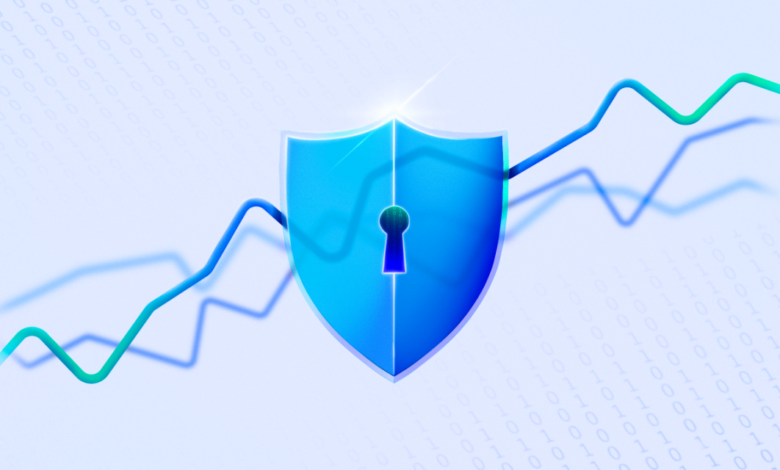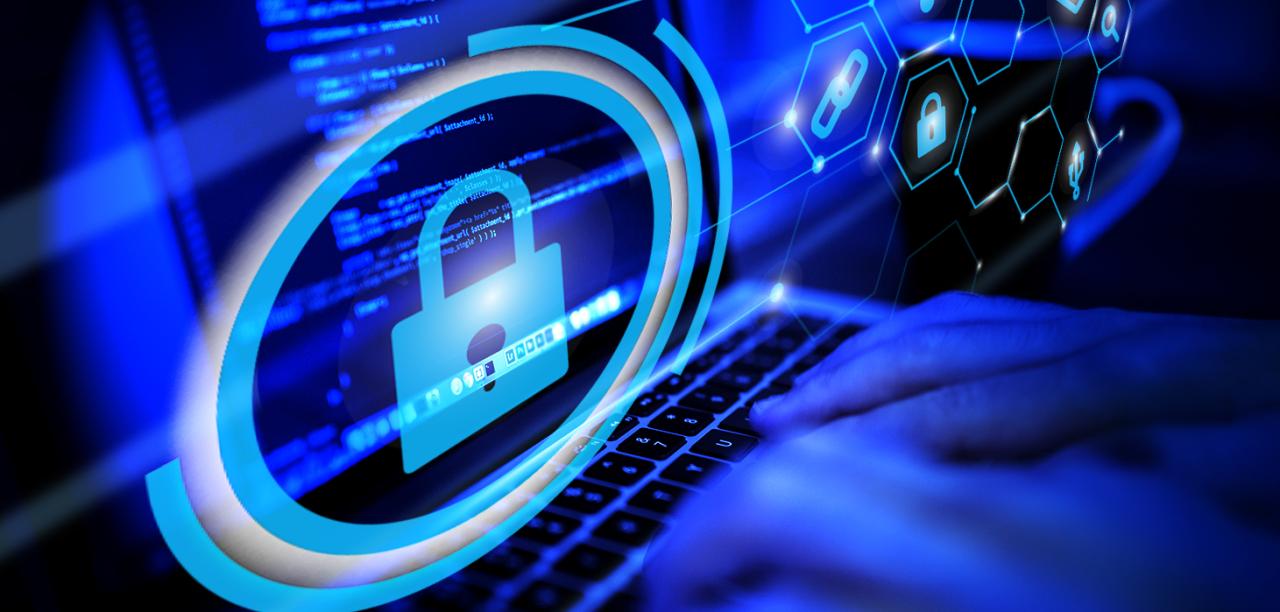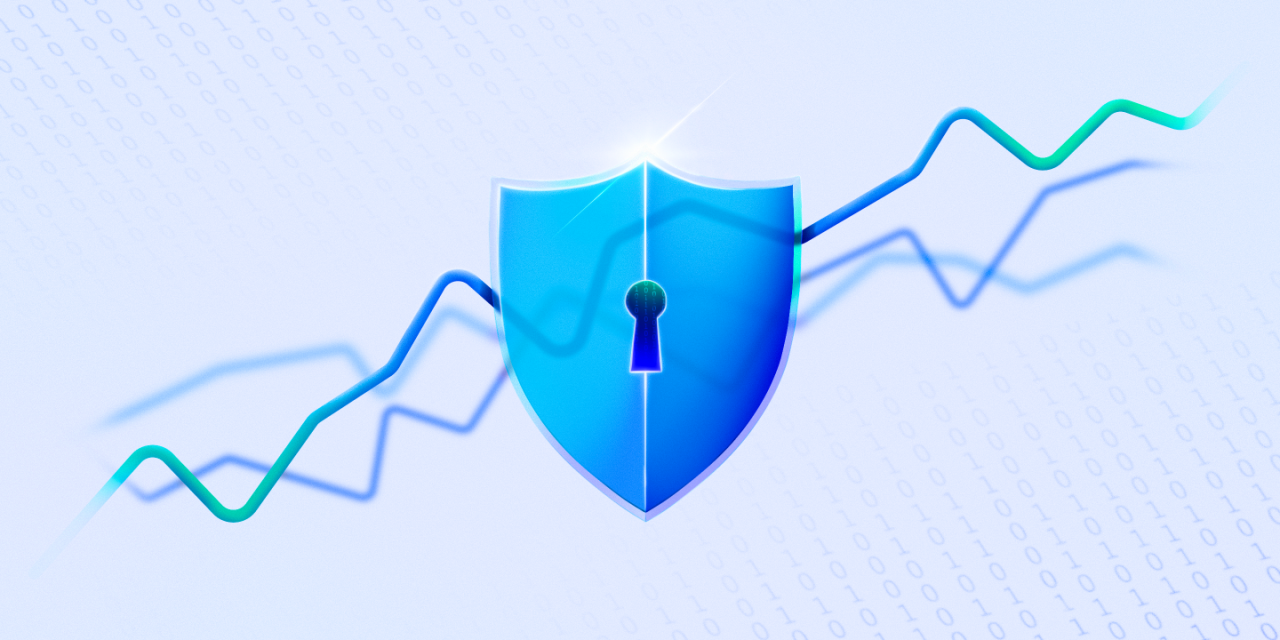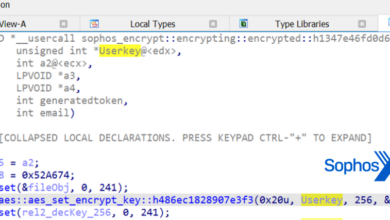
Cyber Attacks A Blessing in Disguise for Cybersecurity Stocks
How cyber attacks can be a blessing to those buying cybersecurity stocks? This explores how the increasing frequency and sophistication of cyberattacks can actually boost demand for cybersecurity solutions, leading to potentially lucrative investment opportunities for those in the know.
From the growing threat landscape to the innovative solutions being developed, this deep dive reveals how investors can capitalize on the cybersecurity market’s resilience. We’ll analyze the correlation between attack frequency and stock performance, the role of media coverage, and the impact on specific industries, providing practical insights and potential investment strategies.
Introduction to Cyber Attacks and Cybersecurity Stocks

Cyberattacks are a growing threat in today’s digital world, impacting individuals, businesses, and governments alike. These attacks come in various forms, ranging from phishing scams and malware infections to sophisticated ransomware campaigns and denial-of-service attacks. The consequences can be devastating, leading to financial losses, reputational damage, and operational disruptions. Understanding the different types of cyberattacks and their potential impact is crucial for navigating the evolving digital landscape.The cybersecurity industry is a dynamic sector driven by the increasing need for robust protection against digital threats.
Companies in this field offer a wide array of solutions, from software and hardware to managed security services. Their business model typically involves developing and selling products or providing services that enhance security measures for clients. This includes proactive security solutions, incident response services, and ongoing support to mitigate risks and vulnerabilities. These solutions range from advanced endpoint detection and response (EDR) tools to penetration testing services that simulate attacks to identify weaknesses.The frequency and sophistication of cyberattacks directly influence the demand for cybersecurity products and services.
As threats escalate, organizations become more aware of the need for robust security measures, leading to increased investment in cybersecurity solutions. This creates a positive feedback loop, where increased attacks often lead to increased demand and, in turn, drive growth in the cybersecurity market.
Cybersecurity Stock Categories
Different companies within the cybersecurity sector cater to various needs and offer diverse products and services. Understanding the various categories can help investors make informed decisions.
| Category | Description | Examples |
|---|---|---|
| Software | Companies that develop and sell cybersecurity software solutions. These can include anti-virus programs, intrusion detection systems, and security information and event management (SIEM) platforms. | CrowdStrike, Palo Alto Networks, McAfee |
| Hardware | Companies that manufacture and sell cybersecurity hardware devices. These can include firewalls, intrusion prevention systems (IPS), and secure access servers. | Fortinet, Check Point Software Technologies |
| Services | Companies that provide managed security services to clients. These can include penetration testing, incident response, and security consulting. | IBM Security, Accenture, CrowdStrike |
The Correlation Between Attack Frequency and Stock Performance
The cybersecurity industry is a dynamic field, constantly adapting to the evolving threat landscape. As cyberattacks become more frequent and sophisticated, investors are naturally drawn to companies that can provide effective solutions. This creates a unique correlation between the frequency of attacks and the performance of cybersecurity stocks. Understanding this relationship is crucial for investors seeking to navigate the market’s fluctuations.While a direct causal link isn’t always immediately apparent, a surge in cyberattacks often correlates with heightened investor interest in cybersecurity solutions.
This can lead to increased demand and, consequently, positive stock performance. Conversely, periods of relative calm in the threat landscape might lead to decreased investor interest, potentially impacting stock prices. It’s a delicate balance.
Impact of Public Perception on Investor Confidence, How cyber attacks can be a blessing to those buying cybersecurity stocks
Public perception of cybersecurity threats plays a significant role in shaping investor confidence. High-profile breaches and publicized vulnerabilities can create fear and uncertainty, leading to increased demand for cybersecurity solutions and a positive impact on related stock prices. Conversely, periods of relative calm, or a lack of significant public attention to cybersecurity issues, might lead to a decline in investor interest and a subsequent decrease in stock prices.
Historical Examples of Cyberattacks and Their Impact
Several notable cyberattacks have had a demonstrable impact on the market. The WannaCry ransomware attack in 2017, for example, caused widespread disruption and panic, leading to increased demand for cybersecurity solutions. Similarly, the SolarWinds hack, also in 2020, created substantial concern and doubt regarding the security of software supply chains. These events often coincide with a temporary surge in demand for cybersecurity stocks as investors scramble to secure their systems.
Price Fluctuations of Selected Cybersecurity Stocks
The following table illustrates how the prices of selected cybersecurity stocks might fluctuate before, during, and after significant cyberattacks. It’s important to remember that this is a simplified representation and doesn’t account for all market factors. Stock performance is influenced by many elements, and this table is meant to show a possible trend.
| Company | Event | Period | Price Change |
|---|---|---|---|
| Palo Alto Networks | WannaCry ransomware attack | Pre-attack to Post-attack | Increased demand and price appreciation |
| CrowdStrike | SolarWinds hack | Pre-attack to Post-attack | Increased demand and price appreciation |
| Fortinet | Specific Cyberattack Example | Pre-attack to Post-attack | Moderate increase in demand and price appreciation |
Note: This table represents a possible trend, not an exhaustive analysis. Numerous other market factors can influence stock prices.
Cyberattacks, while undeniably disruptive, can sometimes be a boon for investors in cybersecurity stocks. Recent vulnerabilities like the ones detailed in the Azure Cosmos DB Vulnerability Details highlight the critical need for robust security measures. This heightened awareness and demand for better protection directly translate into increased profits for companies specializing in cybersecurity solutions, making it a potentially lucrative investment opportunity.
The Role of Media Coverage and Public Awareness
Media coverage plays a crucial role in shaping public perception of cyberattacks and their consequences, often influencing investor sentiment toward cybersecurity stocks. The way news outlets frame these events can significantly impact how investors view the risks and opportunities within the cybersecurity sector. This influence can manifest in both positive and negative ways, impacting stock prices and driving market trends.
Media’s Influence on Investor Sentiment
News reports, whether positive or negative, can significantly sway investor sentiment regarding cybersecurity stocks. Positive coverage highlighting successful cybersecurity measures, innovative solutions, or increasing cyber threats can boost investor confidence, leading to higher stock prices. Conversely, negative coverage focusing on major breaches, costly attacks, or regulatory scrutiny can lead to investor anxiety and lower stock prices. The tone and emphasis of media reports directly correlate with investor reaction, shaping public opinion and, consequently, market fluctuations.
For example, if a major news outlet publishes a story about a successful hack of a well-known company, the stock price of cybersecurity companies might take a dip. However, a story highlighting the proactive measures of a company in the sector might see a rise.
Impact of News Coverage on Stock Prices
Media coverage can significantly influence stock prices in the cybersecurity sector. News articles and reports detailing successful security implementations or innovative product launches can generate positive investor sentiment, driving up stock prices. Conversely, news reports about high-profile cyberattacks or regulatory fines can create apprehension, leading to a decline in stock prices. The perceived severity of the attack and the company’s response directly impact the stock market’s reaction.
The speed and thoroughness of a company’s response can also be a significant factor.
Summary of Media Coverage Trends
The following table summarizes recent trends in media coverage of cybersecurity-related news, showing a general upward trend in the frequency of cybersecurity news over the past few years. The data is indicative and should not be taken as conclusive. Further research and analysis would be required for a more definitive understanding.
| Year | News Category | Frequency | General Trend |
|---|---|---|---|
| 2020 | High-profile breaches | High | Increasing |
| 2021 | Security solutions/innovations | Medium | Increasing |
| 2022 | Regulatory changes | High | Increasing |
| 2023 | Cybersecurity investments | High | Increasing |
“The speed and thoroughness of a company’s response to a security breach can greatly influence investor sentiment, directly impacting stock prices.”
Impact on Specific Sectors and Industries

Cyberattacks aren’t a uniform threat; their impact varies drastically across different sectors, creating unique vulnerabilities and opportunities. Understanding these disparities is crucial for investors in cybersecurity and for businesses seeking to bolster their defenses. The financial ramifications of a successful attack can range from minor inconveniences to catastrophic losses, depending heavily on the targeted industry and the nature of the attack.The increasing sophistication of cyberattacks, coupled with the growing reliance on digital infrastructure, means that every industry faces evolving threats.
This necessitates a tailored approach to cybersecurity, recognizing the unique vulnerabilities and needs of each sector. For instance, a supply chain attack on a critical infrastructure company could have far more severe consequences than a similar attack on a retail company. The financial losses and societal impact can be profound, and the ripple effects can be widespread.
Financial Services Sector Vulnerability
The financial services sector is a prime target for cyberattacks due to the sensitive data it handles and the potential for significant financial gain for attackers. Phishing scams, malware infections, and denial-of-service attacks are common tactics used against banks, investment firms, and other financial institutions. Data breaches can lead to substantial losses through customer churn, regulatory fines, and reputational damage.
It’s a bit of a strange twist, but cyberattacks can actually be a boon for those savvy enough to invest in cybersecurity stocks. The more breaches and vulnerabilities are exposed, the greater the need for robust security solutions, like the ones offered by companies investing in AI-powered tools. This heightened awareness necessitates solutions like Deploying AI Code Safety Goggles Needed to proactively address the security issues arising from code vulnerabilities.
Ultimately, this translates to increased demand and therefore, higher stock prices for cybersecurity companies.
The sheer volume of transactions processed daily in this sector makes it a tempting target. Successful attacks can result in significant financial losses, impacting not only the targeted institution but also the wider economy.
Healthcare Industry and Patient Data
The healthcare industry faces unique challenges in safeguarding patient data. The increasing use of electronic health records (EHRs) makes healthcare organizations vulnerable to cyberattacks targeting sensitive patient information. The potential for reputational damage and legal liabilities associated with a data breach is enormous. Moreover, disruption to medical services can have serious consequences for patient well-being. The consequences can be severe, affecting not only the hospital but the patients’ lives.
Critical Infrastructure and Public Safety
Critical infrastructure, including energy, transportation, and water utilities, is extremely vulnerable to cyberattacks. Disruptions to these systems can have far-reaching consequences, impacting public safety and the economy. A successful attack on a power grid, for instance, could lead to widespread outages and economic losses. These disruptions can have long-term effects on public safety and economic stability. Cyberattacks on critical infrastructure systems have the potential to cause extensive damage, and the consequences could be devastating.
Retail and E-commerce
Retail and e-commerce companies face significant risks from data breaches and fraud schemes. Stolen credit card information, compromised customer data, and intellectual property theft can result in substantial financial losses. These companies are constantly under pressure to maintain secure online platforms and protect customer data, and cyberattacks can disrupt their operations significantly. Retailers rely on their online platforms for a substantial portion of their revenue, making their vulnerability even greater.
A Table Illustrating Industry Vulnerabilities and Solutions
| Industry | Vulnerabilities | Cybersecurity Solutions |
|---|---|---|
| Financial Services | Phishing, malware, denial-of-service attacks, data breaches | Multi-factor authentication, robust firewalls, encryption, regular security audits |
| Healthcare | Data breaches, ransomware, unauthorized access to EHRs | Data encryption, access controls, regular security updates, incident response plans |
| Critical Infrastructure | Supply chain attacks, denial-of-service attacks, sabotage | Network segmentation, intrusion detection systems, security awareness training for employees |
| Retail/E-commerce | Data breaches, fraud schemes, payment processing vulnerabilities | Secure payment gateways, encryption of customer data, regular security assessments |
The Impact of Government Regulations and Policies
Government regulations play a crucial role in shaping the cybersecurity landscape and, consequently, the performance of cybersecurity stocks. These regulations, often driven by increasing cyber threats and data breaches, establish standards, mandates, and enforcement mechanisms that impact companies’ operational strategies and financial outcomes. Understanding how government policies influence the cybersecurity market is essential for investors seeking to navigate this dynamic sector.Government regulations, in many cases, directly affect the profitability and market position of cybersecurity companies.
They can dictate the level of investment required for compliance, introduce new standards and frameworks, and establish clear penalties for non-compliance. This often translates into a ripple effect throughout the entire cybersecurity sector, with companies needing to adapt their products, services, and strategies to meet evolving regulatory requirements.
Regulations Impacting Cybersecurity Companies
Government regulations across the globe are becoming increasingly sophisticated and comprehensive, aiming to protect critical infrastructure and personal data. These regulations mandate specific security measures for various industries, creating both challenges and opportunities for cybersecurity companies. Examples include the EU’s General Data Protection Regulation (GDPR), the California Consumer Privacy Act (CCPA), and similar legislation worldwide. These regulations often require companies to enhance their security posture, leading to increased demand for cybersecurity solutions and impacting stock prices.
Influence of Government Initiatives and Funding
Government initiatives and funding significantly impact cybersecurity investments. Targeted funding for research and development (R&D) in cybersecurity can stimulate innovation and create new market opportunities. For instance, government grants or tax incentives can attract private investment, fostering the development of cutting-edge security technologies and products. Conversely, reduced funding can potentially slow down the pace of innovation and negatively affect stock prices for cybersecurity companies.
Governments frequently invest in cybersecurity infrastructure and tools, which also affects the market.
Impact on Different Cybersecurity Stock Sectors
Government regulations often affect different cybersecurity sectors differently. The level of impact can vary based on the specific regulations, industry-specific requirements, and company size.
While cyberattacks might seem awful, they can actually be a boon for investors in cybersecurity stocks. The recent Department of Justice initiative, Department of Justice Offers Safe Harbor for MA Transactions , highlights the growing need for robust security measures. This increased awareness and demand for solutions directly translates to higher stock prices for companies offering such protections.
So, maybe those seemingly negative headlines aren’t so bad after all for the savvy stock picker.
| Cybersecurity Stock Sector | Impact of Government Regulations |
|---|---|
| Endpoint Security | Regulations like GDPR and CCPA drive demand for robust endpoint security solutions. Companies focused on this sector often experience positive stock performance as governments mandate stricter security protocols. |
| Network Security | Government mandates for network security protocols can boost demand for advanced firewalls, intrusion detection systems, and other network security products. Stock prices for companies providing these solutions may increase due to heightened demand. |
| Cloud Security | Growing adoption of cloud services necessitates robust cloud security solutions. Regulations that encourage cloud adoption or mandate specific security standards for cloud environments positively affect cloud security stocks. |
| Data Loss Prevention (DLP) | Data breaches are a serious concern for governments. Regulations that address data loss prevention often translate to a higher demand for DLP solutions, leading to positive stock price movements for companies specializing in this area. |
Cybersecurity Stock Investments
Investing in cybersecurity stocks presents a unique opportunity to capitalize on the growing demand for robust digital defenses. However, navigating this sector requires a nuanced understanding of both the potential rewards and the inherent risks. The increasing frequency of cyberattacks necessitates a stronger focus on cybersecurity measures, which translates into a surge in demand for companies that offer solutions in this field.A thorough risk assessment is paramount when considering cybersecurity stock investments.
This process involves scrutinizing the financial health, market positioning, and competitive landscape of potential investment targets. Successful investments often stem from an in-depth understanding of the company’s offerings, market trends, and the overall regulatory environment.
Risk Assessment Procedure for Cybersecurity Stocks
A robust risk assessment involves multiple steps. First, evaluate the company’s financial stability, including revenue growth, profitability, and debt levels. Assess the company’s market share, competitive advantage, and intellectual property. Next, consider the cybersecurity landscape and emerging threats. Finally, examine the regulatory environment, understanding any compliance requirements or potential regulatory changes.
Thorough due diligence is crucial.
Key Factors to Consider When Investing in Cybersecurity Stocks
Several critical factors must be evaluated before making any investment decisions. Consider the company’s product offerings and market penetration. Analyze their ability to innovate and adapt to evolving threats. Assess the company’s management team and their experience in the cybersecurity sector. Evaluate the company’s growth trajectory and financial performance.
Understanding the company’s position within the broader cybersecurity ecosystem is critical.
Potential Opportunities and Challenges
Cybersecurity stock investments present numerous opportunities, including participation in a rapidly expanding market. Companies offering cutting-edge solutions and innovative technologies often exhibit strong growth potential. However, the cybersecurity sector is highly competitive, with frequent new entrants and evolving technologies. Market volatility and unpredictable shifts in the threat landscape pose challenges to investors.
Table: Potential Risks and Mitigation Strategies for Cybersecurity Stocks
| Potential Risk | Mitigation Strategy |
|---|---|
| Rapid technological advancements leading to obsolescence of existing products | Invest in companies with a proven track record of innovation and adaptation. Research their R&D investments and partnerships. |
| Increased competition from established players and new entrants | Scrutinize the company’s competitive advantages, pricing strategies, and market positioning. Consider companies with niche specializations. |
| Regulatory changes affecting the industry | Stay updated on evolving cybersecurity regulations and compliance requirements. Research companies with strong compliance records. |
| Economic downturns impacting demand for cybersecurity solutions | Focus on companies with diverse revenue streams or those serving essential sectors. Consider companies with strong balance sheets. |
| Cybersecurity threats to the company itself | Investigate the company’s security posture and data protection measures. Seek companies with a proven track record of safeguarding their own information. |
Case Studies of Successful Cybersecurity Companies: How Cyber Attacks Can Be A Blessing To Those Buying Cybersecurity Stocks
The cybersecurity landscape is constantly evolving, demanding innovative solutions and adaptable strategies. Analyzing successful companies offers valuable insights into navigating the complexities of this dynamic market. These case studies highlight not only the technological prowess but also the business acumen required to thrive in the face of persistent cyber threats.Successful cybersecurity companies often exhibit a combination of strong technical expertise, a deep understanding of evolving threat landscapes, and a keen ability to adapt their business models to meet market demands.
They recognize the importance of proactive security measures, continuous improvement, and the ability to rapidly respond to emerging threats. By examining their approaches, we can gain valuable lessons for the future of cybersecurity.
Key Characteristics of Successful Cybersecurity Companies
Understanding the traits shared by successful cybersecurity firms is crucial for aspiring companies and investors alike. These companies typically demonstrate a blend of technical expertise, strategic adaptability, and a customer-centric approach. This combination allows them to not only meet current security needs but also anticipate future threats and market trends.
- Proactive Threat Intelligence: Leading cybersecurity companies don’t just react to attacks; they proactively monitor and analyze threat landscapes. They invest heavily in threat intelligence gathering, enabling them to identify emerging threats before they materialize into widespread attacks. This proactive approach allows them to stay ahead of the curve and provide cutting-edge protection to their clients.
- Strong Product Portfolio and Innovation: Successful cybersecurity companies continuously innovate and develop cutting-edge solutions. Their product portfolios often encompass a range of tools and services designed to address diverse security needs, from endpoint protection to cloud security and network security. This broad portfolio enables them to cater to a wider customer base and maintain market leadership.
- Customer-Centric Approach: These companies understand that security is not just about technology; it’s about building trust and ensuring smooth customer experiences. Their customer service and support teams are well-equipped to address customer concerns and provide timely assistance. They recognize the importance of ongoing training and support to ensure customers can effectively use their solutions.
- Strategic Partnerships and Alliances: Successful cybersecurity companies often leverage strategic partnerships and alliances to expand their reach and expertise. These partnerships can provide access to new technologies, markets, and talent pools, allowing them to address a wider range of security challenges. This collaborative approach allows for the sharing of knowledge and resources, fostering innovation and growth.
Example: Palo Alto Networks
Palo Alto Networks stands out as a prime example of a successful cybersecurity company. Their strategy is built on a combination of proactive threat intelligence, innovative security products, and strategic partnerships. They have demonstrated adaptability by consistently responding to evolving threat landscapes and adjusting their offerings to meet the growing demand for advanced security solutions. Their commitment to customer support and innovation has been instrumental in their consistent market leadership.
- Adapting to Cloud Security: Palo Alto Networks has aggressively expanded its cloud security offerings to cater to the increasing shift towards cloud-based infrastructure. This adaptation demonstrates a keen understanding of market trends and a commitment to providing comprehensive security solutions in this evolving environment.
- Responding to Ransomware Attacks: Palo Alto Networks has developed solutions specifically designed to detect and prevent ransomware attacks. This proactive response to a prevalent threat underscores their commitment to addressing emerging security challenges and protecting their customers.
Example: CrowdStrike
CrowdStrike, known for its endpoint detection and response (EDR) solutions, is another prominent example. Their focus on the proactive identification and response to advanced persistent threats (APTs) sets them apart. CrowdStrike’s strategy prioritizes real-time threat analysis and automation, enabling swift and effective responses to security incidents. Their strong emphasis on threat intelligence and automation has been crucial in their rapid growth and market leadership.
Summary Table
| Characteristic | Description |
|---|---|
| Proactive Threat Intelligence | Continuous monitoring and analysis of threat landscapes to identify emerging threats. |
| Strong Product Portfolio | Offering a diverse range of security solutions addressing various needs and adapting to market trends. |
| Customer-Centric Approach | Prioritizing customer support, training, and experience to ensure successful implementation. |
| Strategic Partnerships | Leveraging collaborations with other companies to enhance expertise and expand market reach. |
Illustrative Scenarios and Hypothetical Analyses
Navigating the volatile landscape of cybersecurity necessitates a nuanced understanding of potential impacts. This section delves into hypothetical scenarios to illustrate how cyberattacks can affect cybersecurity stock performance, enabling investors to better anticipate and prepare for market reactions. We’ll explore diverse responses from companies facing such threats, and how these events can shape investor sentiment.
Major Cyberattack Scenario: The “Global Data Breach”
The “Global Data Breach” scenario involves a sophisticated, nation-state-sponsored attack targeting a wide array of critical infrastructure and financial institutions. This attack leverages zero-day exploits to penetrate numerous systems simultaneously, leading to widespread data exfiltration and disruption. The initial impact is characterized by significant service outages, data loss, and reputational damage for affected entities.
Company Responses to the “Global Data Breach”
Different cybersecurity companies react differently to the “Global Data Breach”. Companies specializing in incident response services see a surge in demand as organizations scramble to contain the damage. Their stock price, in turn, exhibits a strong upward trend. Meanwhile, companies focused on preventative measures and proactive threat intelligence also benefit, as their services become crucial for mitigating future risks.
Conversely, companies whose solutions are compromised or exposed during the attack experience a steep drop in stock price.
Potential Outcomes of Cyberattacks on Cybersecurity Stocks
| Cyberattack Scenario | Impact on Cybersecurity Stocks (General Trend) | Impact on Investor Behavior | Specific Examples |
|---|---|---|---|
| Sophisticated Targeted Attack on Financial Institutions | Significant increase in demand for incident response and security intelligence. | Investors seek out companies specializing in threat detection and response. | Companies like Mandiant, FireEye see high demand for their incident response services. |
| Widespread Ransomware Attacks | Mixed impact; some companies see an increase in demand for ransomware protection, while others are negatively affected by decreased user trust. | Investors diversify portfolios to include companies specializing in security solutions and disaster recovery. | Companies offering strong ransomware recovery solutions see a positive impact. |
| Supply Chain Attack Targeting Cybersecurity Vendors | Significant negative impact on companies whose products are compromised. | Investors become more cautious about supply chain risks and demand transparency from vendors. | Companies whose products are integrated into the supply chain are likely to experience significant stock price drops. |
Impact on Stock Prices and Investor Behavior
The impact on stock prices is multifaceted, often dependent on the type of attack, the response time of the affected companies, and the media coverage. During a major breach, investor behavior is often characterized by a flight to safety. Investors seek out companies perceived as robust and capable of mitigating risks. This can lead to a short-term dip in stock prices for companies directly affected by the breach but a long-term rise in demand for solutions capable of handling such events.
Investors who anticipate future demand for security solutions may see opportunities in companies that specialize in preventative measures and recovery.
“Market reactions to cyberattacks are complex and often involve both short-term volatility and longer-term shifts in investor sentiment.”
Ending Remarks
In conclusion, while cyberattacks are undeniably disruptive, they also present a unique opportunity for investors in cybersecurity stocks. By understanding the correlation between attacks and stock performance, the influence of media, and the specific vulnerabilities of different sectors, savvy investors can identify potential gains. This analysis provides a comprehensive view of the complex relationship between cyber threats and market opportunities, highlighting the resilience and potential of the cybersecurity sector.
User Queries
What are some specific types of cyberattacks that are driving demand for cybersecurity solutions?
Ransomware attacks, data breaches, phishing scams, and denial-of-service (DoS) attacks are all significant drivers. These attacks highlight the critical need for robust cybersecurity measures across various industries.
How can investors assess the risk associated with investing in cybersecurity stocks?
Risk assessment involves analyzing the company’s financial health, its market position, the competitive landscape, and the regulatory environment. A thorough due diligence process is crucial before investing.
What role do government regulations play in influencing cybersecurity stock performance?
Stringent cybersecurity regulations can drive demand for compliance solutions and potentially boost the market value of companies specializing in these solutions. Regulations also influence the development and adoption of new technologies.
What are some examples of successful cybersecurity companies and their growth strategies?
Several well-known companies have successfully navigated the cybersecurity landscape. They often focus on innovation, developing advanced solutions, and establishing strong market positions through strategic acquisitions and partnerships.





